
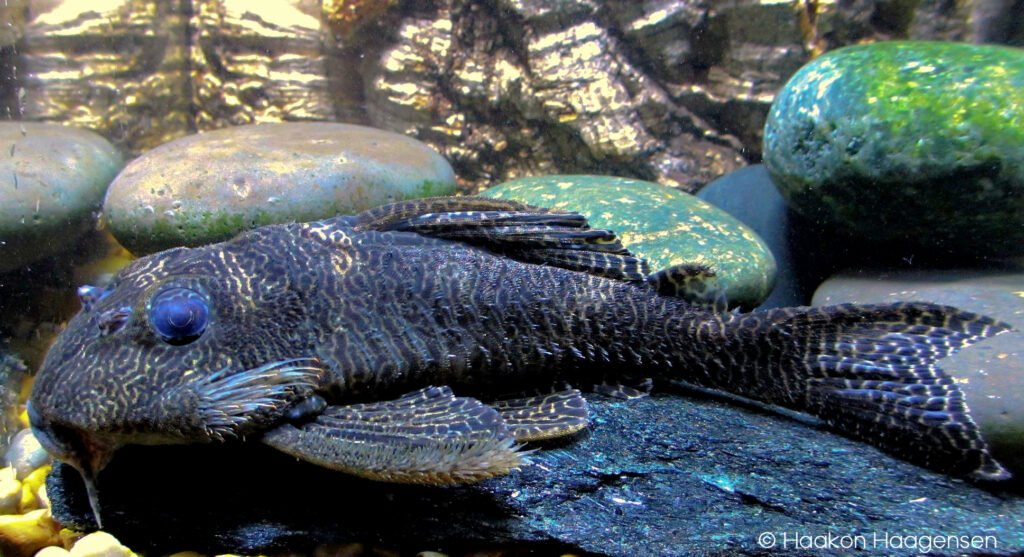
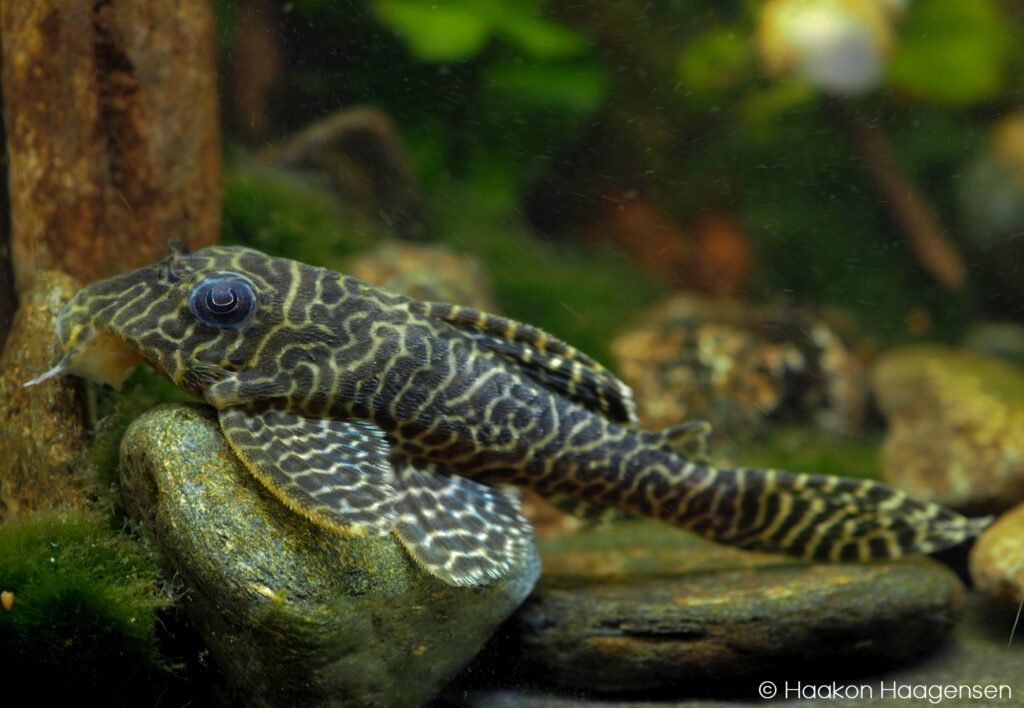


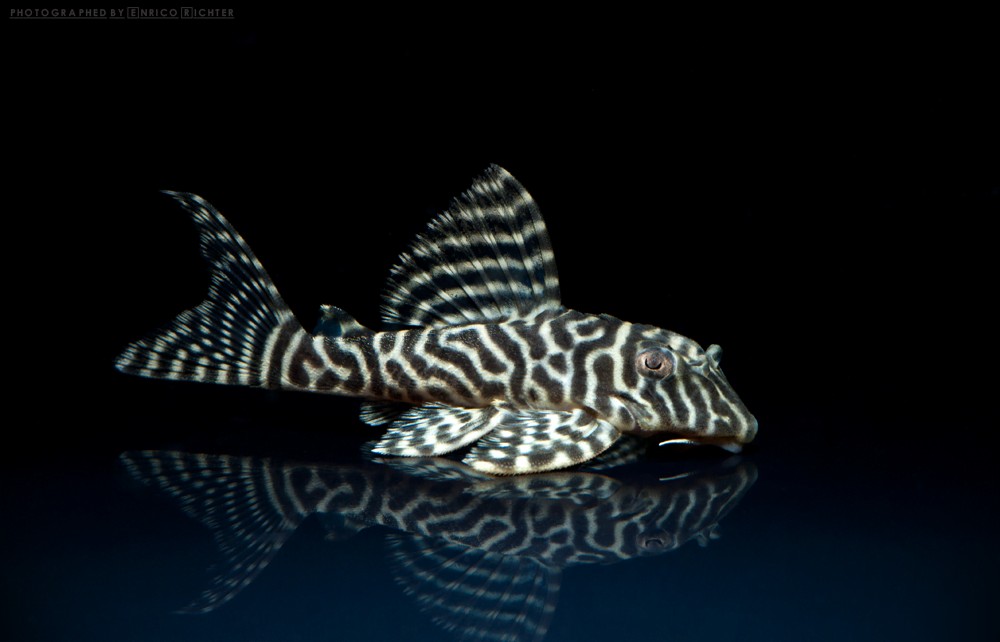
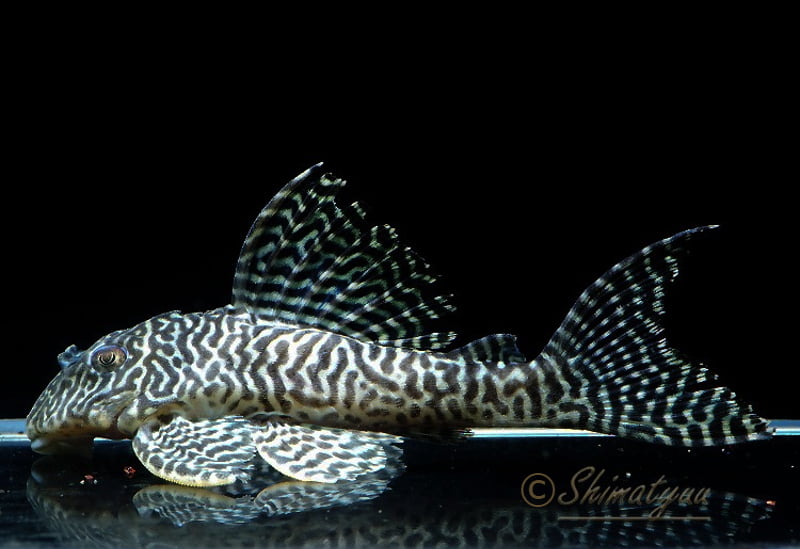
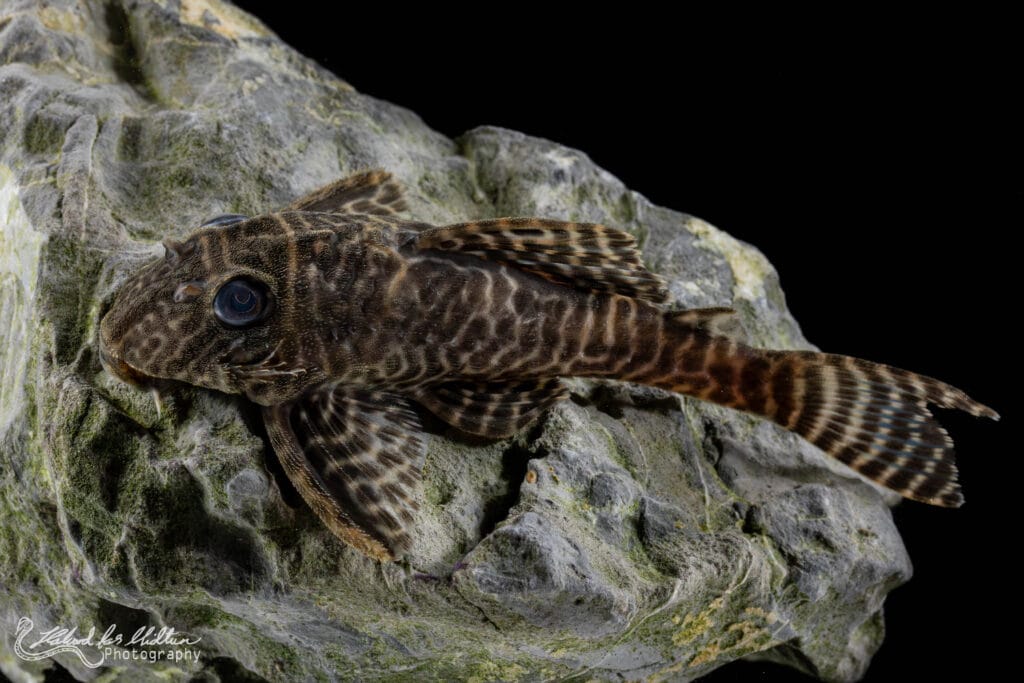
One of the most desired plecos in the world and one of my personal favourites (for nostalgic reasons) is the King Tiger pleco from Rio Xingu, Brazil. It was long considered a “poor man’s L46” and is by now a well-established fish in the hobby. With its striking black worm line pattern against a light background, it’s no wonder this species has become so popular. However, the danger of crossbreeding looms over its existence in our hobby. Pure breeding is important to maintain the natural strains in captivity, as its natural habitat faces an uncertain future with the damming of the Xingu river.
Facts:
Name: Hypancistrus seideli (Sousa, Sousa, Ribeiro, Sabaj, Zuanon & Py-Daniel, 2025)
Trade names: King Tiger Pleco, L66, Hypancistrus sp. “Pao”
Origin: Rio Xingu, Brazil.
Maximum size: 18 cm / 7”
Rio Xingu is home to many similar looking Hypancistrus forms. They are all considered by scientists to be variations (morphs) of the same species. Still, keeping the forms separated in captivity should be the rule, to avoid a blurry captive strain in the future. L66 is possible to recognize with its large adult size, forked tail and a body that is lower than it’s close relative L333. Compared to similar forms like L399/400, L66 usually shows a more consistent line-pattern that is not broken up into dots. However, pattern alone should never be relied on to tell the different Xingu morphs apart. In young fish, the pattern of L66 can be very striking, with just a few, broad, black lines against a white body. Such specimens were initially thought to be a different form or even species (such as L236), but we have since learned that this pattern is a mutation that sometimes occur in most of the wormlined forms of Hypancistrus, and not just the Xingu forms. Adult specimens, males in particular, can become very grey and dull coloured with their body almost covered in odontodes.
They need an aquarium set up consisting of lots of hiding places in the form of rocks, wood and of course specially made caves that suit their measurements. In these the males will eventually guard their offspring. They prefer water that is warm (27-30 C), soft and slightly acidic. Most of all it should be well oxygenated and clean, so a good filtration system and frequent water changes are essential. Among themselves they are peaceful, although males may quarrel for caves and females can sometimes be badly injured or even killed during the breeding-trapping in the male’s cave. Males develop longer odontodes on their pectoral fins and on their cheeks and have broader heads. Hypancistrus are mostly carnivorous, so a selection of crustaceans, insect larvae and fish meat should be offered along with high quality dried foods that also contain some vegetable matter.
More info:
